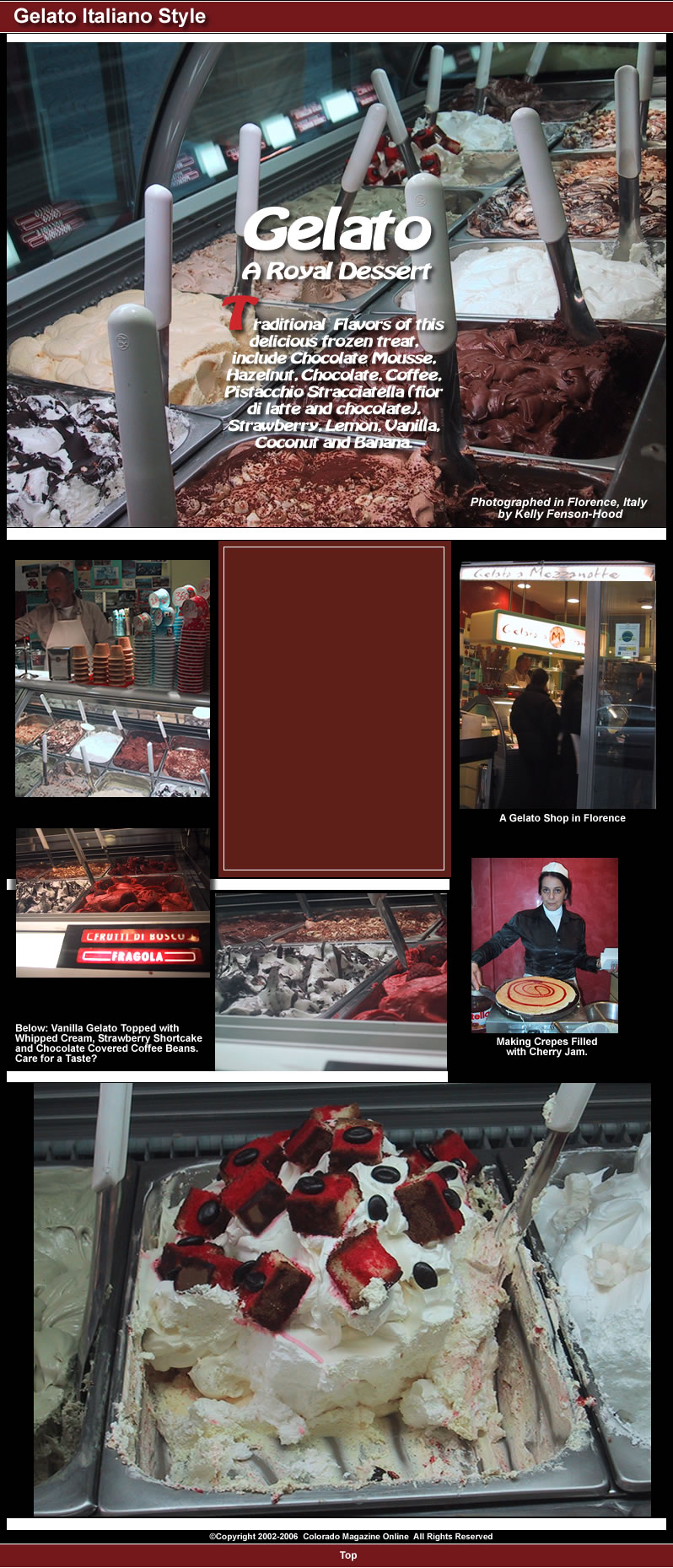

Gelato’s history can be traced to many sources. Considered a delicacy in early days, this dessert was reserved for the upper class. The earliest Gelato-like dessert is believed to have originated 3000 to 4000 years ago, when Emperors of China indulged themselves in frozen delicacies, and a recipe for a frozen dessert that included rice mixed with milk, fruit, wine and honey-flavored snow is attributed to the ancient Chinese in Charles Panati's book, "Extra Ordinary Origins of Everyday Things."
Legend has it that the Chinese taught Arab traders how to combine syrups with snow to create an early version of sorbetto. The Arab traders then passed the knowledge onto the Venetians and the Romans, who then began to create their own versions of this rich, creamy dessert. In the 4th Century B.C., Alexander the Great was known to be fond of iced beverages and in 62 A.D., the Roman Emperor Nero sent fleets of slaves to the Apennine mountains to collect snow and ice to be flavored with nectar, fruit, spices and honey...before he melted it all.
In the 13th century Marco Polo brought recipes for frozen milk desserts back from the court of the great Khan. A few centuries later in France, ices became really fashionable, when Francesco Procope opened the first Parisienne ice cream parlour. From France, ice cream spread to the English court.
In the 16th century Catherine de Medici of Florence is said to have brought gelato recipes to France, when she married Henry II and became Queen of France. In the 17th Century, Charles I of England purchased a formula for “frozen milk” from a French chef.
Gelato made with milk, cream, sugar, eggs, and natural flavors was also created in northern Italy by the people of Dolomite and for many decades Italians were dominant in the business of milk-based Gelato in northern Italy and in neighboring countries.
Sorbetto or Sorbet made in southern Italy was lower in fat, predominantly water-based and slightly higher in sugar content. Sicilian Gelato makers also traveled to the neighboring countries to sell their dessert. Gelato made its first public appearance in the U.S. at the St Louis World's Fair in 1904.
The successful development of flavored ices on a commercial basis was furthered through the advent of the edible cone which was invented in New Jersey by an Italian named Marchionni.
Dairy gelato is made with whole cow's milk and contains less butterfat than ice cream. Another variation of Gelato, known as sorbetto, is made with water and no dairy ingredients.
Gelato concoctions may include various
ingredients, such as fresh fruit, chocolate flakes, chips, candies, nuts,
cookies or other sweet ingredients.
In the U.S., gelato is often made using flavors imported from Italy. Gelato
is used as a main ingredient in some Italian food products, such as ice cream
cake, gelato cake, spumoni, cassate, Tartufo, and fruit-filled gelato candies.
Although not as prevalent a in Italy, where Gelato my be bought in almost any business area, it’s popularity is increasing in the U.S. market and it is now offered along with espresso drinks in many coffee shops.
So, jump in and enjoy it’s creamy, smooth, cool and delicious flavor. But do it in Italy, if you can.
Research for this story was gathered from web sources among which were: The History of Ice Cream, translated and published by Elise Pascoe in The Incredible Australian Ice Cream Book 1979.
 |
|